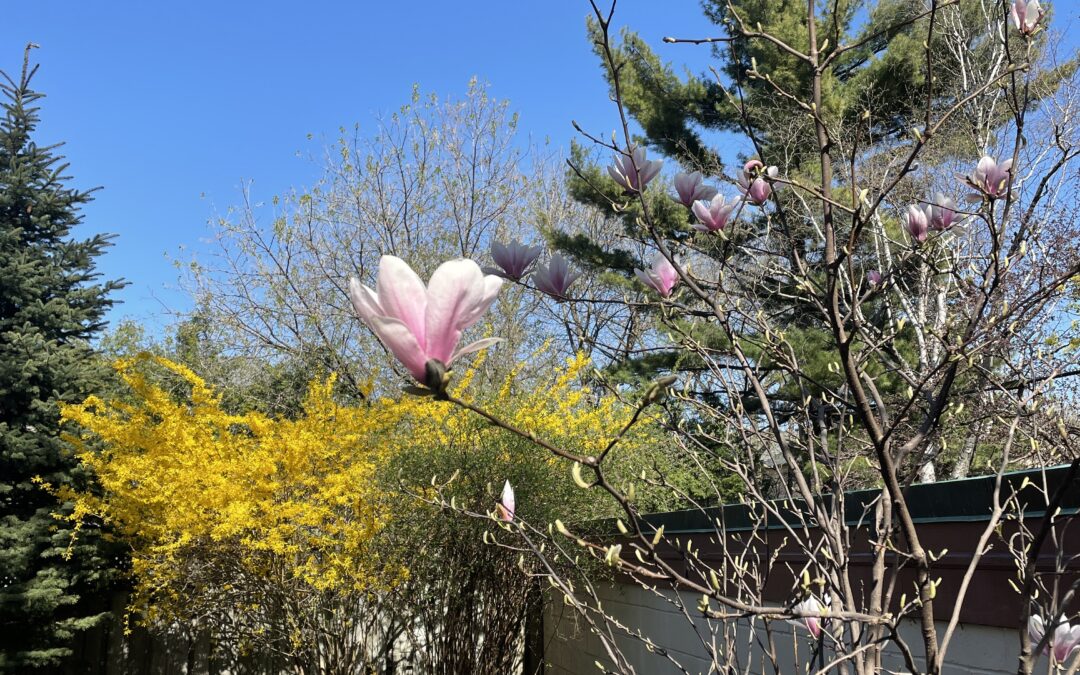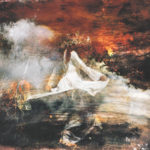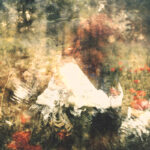Dear fairytale lovers & readers,
It’s a beautiful sunny day today, though last week we had some extremely cold weather with temperatures reaching -20 degrees Celsius, which are essentially the temperatures of various cities across Alaska and the Siberian regions. Still, I went out for my morning walks each day. Whether snowy storms, freezing weathers, each morning I apply my sunscreen (and lots of it!), put on my winter boots, and out I go! Truth be told, no tickness of jeans nor layers of wool beneath my coat can prevent the burning redness of my skin sometimes when I come back home – but, and still, I try to remain dedicated to my morning walks. Sometimes though it’s so cold, that you can feel a tear down your cheek, and somewhere mid way it freezes; your face burns, feels like little needles are pinching it, but as the yogis say – this is wind washing, wind cleansing, wind purifying, mind clearing. It builds resistance, perseverance, and grounds us. Surely, spring always comes, it’s all just the cycles of the land; and the sun is rebellious – even in snow it always wins, melts the ice, and you’d be surprised how the birds still sing in freezing weather, the rabbits are still out, and the squirrels too. It’s all just the cycles of the land.
Because of our freezing weather, and the windy walks outside, I was reminded of a beautiful tale; and tucked away in sunny warmth now, I thought what a beautiful opportunity to take you to the far snowy lands of the Indigenous people of Siberia called the Nenets, telling you their tale “Master of the Winds”.
For those of you new here, welcome; this is part of my series The Story Threads, where I sit down and share various tales, unveiling the layers of wisdom they hold. Previous posts in these series include What the Little Mermaid Knows, What Donkeyskin Knows, What Cinderella Knows, What The Snow Queen Knows, What Sleeping Beauty Knows, What Rapunzel Knows, Wild Marriage, The Gift of the Magi, The Dandelion Girl, What Snow White Knows, Beauty and Her Beast, Weaving Life, Bluebeard, Étaín,Little Red Riding Hood, and many more that you can find in my folklore + myth section.
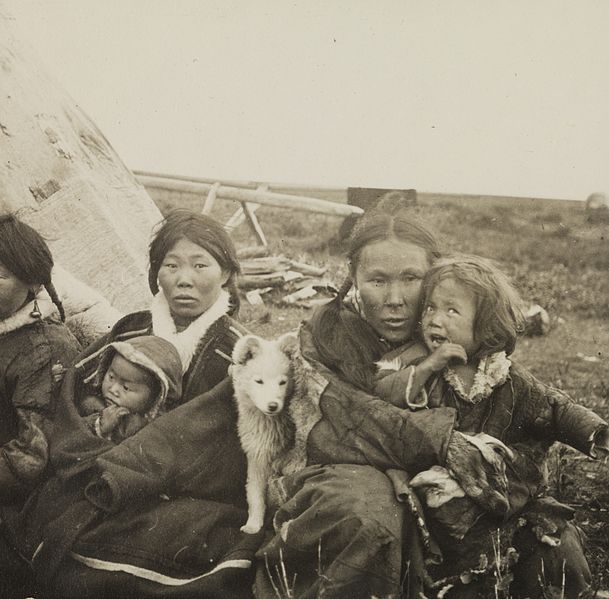
Nenets people, photography by Fridtjof Nansen, October 1913
Throughout the story, I’ll be featuring photography of the Nenets people taken by photographer Fridtjof Nansen from 1893 to early 1900s. The Nenets are Indigenous people native to the Arctic and Siberia regions of Russia. The Nenets are divided into two groups, each is autonomous: the tundra and the forest. The Nenets language is on the Samoyedic branch of the Uralic language family, with two major dialects, Forest Nenets and Tundra Nenets. They have a shamanistic and animistic belief system, which stresses respect for the land and its resources.
For those of you who don’t know, shamanism actually originates from Siberia, and is still part of their Indigenous cultures. The shaman is essentially the person who walks between the worlds; they walk the in-betweens, the betweens the people and the God. They are healers, messengers and mediators, and also act as Tribal guardians, spiritual leaders and teachers/guides. It is believed that people become shamans through inheritance or by being chosen by spirits usually at birth, as they hold special spiritual gifts and talents. They become capable of travelling to other realms and gain the power to heal the sick, control the weather, communicate to ancestors, and predict the future, among other skills. They naturally understand the language of animals and birds, and know nature also.
You see, in our Western world, a lot of people call themselves a lot of fancy things, but shamanism isn’t a lifestyle, isn’t a social media post, isn’t a body of tattoos and trendy clothings – it is something within you that you carry, and that it still needs proper training and development; because with every power, comes great responsibility. Spirituality too is a quiet thing, a private thing, just like love is, just like faith is, just like all true spiritual gifts are. Only those who know can perceive it; for the spiritually impure can never perceive the spiritually pure; they think they can, and they’ll tell you they do, but they can’t, they don’t. This is why the more we as individuals grow on a soul level, and expand our own perceptions (which is what spirituality essentially is: expansion of perceptions), we can re-read a book or an old story, or a verse from the Bible or another sacred text, and suddenly be able to perceive whole new layers of it. All truth and wisdom are already out there, we just need to see it, unhide it from our eyes, and there is a natural process that unfolds through time.
“Master of the Winds” is a Nenets story I know from an old book that I had as a child, which was a collection of folk tales from various Russian ethnic tribes. Let’s begin!
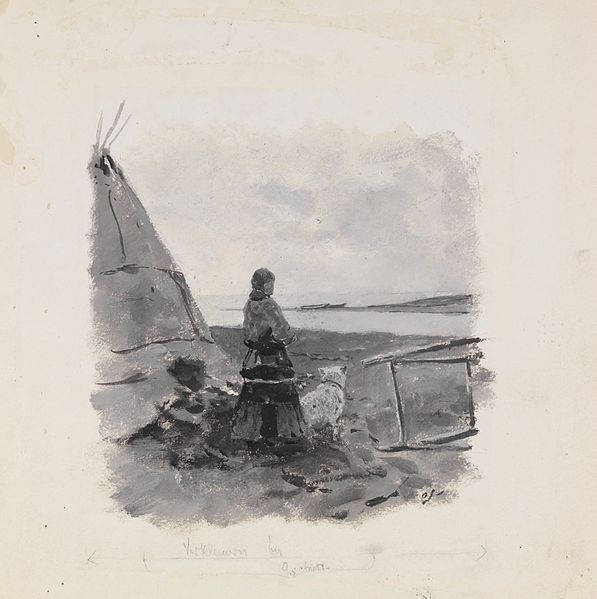
A Nentse girl, photography by Fridtjof Nansen, August 1 1983
Master of the Winds
Many years ago, in the far away snowy Tundra lived a father with his three daughters in their little tschum (*tschum are the traditional dwelling tents of the Siberian people). One day, a horrible snowy storm came with powerful winds and all people in all other tents couldn’t go outside; one day, two days, three days, and the people became very hungry, frail, they needed the winds to stop for they will otherwise not surive.
So the father told his daughters, “This is the Master of the Winds Kotura. We cannot wait for the winds to stop, they will not; we need to go and plead with him for mercy. It seems he is angry and is seeking a good kind wife who will settle him into gentleness; so you, my oldest daughter, go to him and ask him to stop the winds.”
“But I don’t know the way, father,” she replied.
So her father said, “Do not worry. I’ll give you this little sleigh and you push it forward, it will lead you. The winds will try to untie the strings of your coat, but do not tie them, keep going. The snow will try to cover your boots, but do not resist it, do not stop to wipe it off, keep going. And when you see the tall mountain, keep going, climb it; and when you reach the highest top, wipe off the snow from the boots, tie the strings of your coat. Then, a little sparrow will come to you and land on your shoulder, let her land there gently. Do not push her away, do not frighten her, embrace her with your gentle touch. And then put your body in the sleigh sliding down the mountain – you’ll reach Kotura’s tent. Enter it, but do not touch anything, just wait. Wait as long as it takes, until he comes; and when he comes, do as he asks.”
The daughter began her path, but when the strings untied, the freezing cold was too much for her to withstand, and she started tying the strings; and she then started to wipe off the snow, and when she reached the mountain top and the anxious wings of the little sparrow were flapping before her, the girl started flapping her own hands in worry and fear pushing the sparrow away.
When she reached Kotura’s tent, she went in and immediately started eating all the food on the table; and when Kotura entered the tent, he asked the girl to prepare some food and go give it to an old woman in a nearby tent. The girl went out, but she felt really cold from the storm, winds howling and howling, she couldn’t find the tent and so she dropped the food in the snow returning to Kotura. “Did you give the food to the old woman?” he asked, “Yes, I did,” the girl lied.
He remained silent, in well knowing of her lies; and he then asked the girl to knit him a coat of the leathers available while he was out hunting the next morning. So the girl tried and tried, no needle was able to do anything; until suddenly an old woman entered the tent and gently asked the girl, “Girl, can you please look into my ear, there is something bothering me?” “No, I have no time old woman, leave me alone, I have work to do.” When Kotura came back, he tried the coat the girl had tried knitting, but it was not well made at all, and he became even angrier, making the winds even more severe.
Back at the father’s tent, he asked his second daughter to go and try to plead with Kotura; but she did the same as the first. She didn’t let the wind, didn’t let the snow, she pushed away the sparrow, she ate all the food and lied to Kotura about giving it to the old woman, and she then didn’t lend a helping hand to the woman about her ear.
“It is now only up to you my third daughter. My heart aches but I need to let you go for only you now can save us in our village. I know it’s freezing cold, but try to remember what I told you, and just keep going.”
Winds pierced her, untied the strings of her coat baring her skin in the freezing cold, but she kept going. Snows covered her feet, her boots, and only barely she could take steps forward, but little by little, one foot and then another, she kept going, remembering her father’s words that she should stay focused. And on top the mountain she finally opened her eyes, and stood still in exhale; and then the anxious flapping wings of the sparrow came before her, but the girl stayed gentle, stayed calm, and the sparrow too calmed itself, softened its worried and fears, and settled into gentleness and safety on the girl’s shoulder.
When the girl entered Kotura’s house, she waited, and when he came and asked her to prepare the meal and bring it to the tent of the old woman, the girl agreed. She prepared the meal, and then went out to search for the tent; nothing was appearing anywhere, the winds were howling and howling, the girl was freezing but didn’t give up; and suddenly the little sparrow came and showed her the way. The girl knocked on the door, and when the old woman came out, the girl said, “Here is a meal for you to eat, dear woman, Kotura sent me to give it to you.”
“Okay,” said the old woman, and gave the girl a silver plate covered by cloth. “Bring this to Kotura.” When the girl gave the plate to Kotura, he saw inside it some needled for sewing, so he smiled, knowing that the girl did indeed find the old woman’s house and was honest.
He then told the girl that using the needles she should knit him a nice warm coat, and “If you make me this coat to fit me perfectly and keep me warm, I’ll stop the winds and the save your father and all the people.” The girl tried, and tried, but for hours she couldn’t make the needles fit and thickness of the leathers; and just as she was about to lose hope and give up, into the tent came the old woman. “Girl, I have something in my ear bothering me, can you please help me.”
So the girl, as kind as she was, left her work for a while, and looked into the woman’s ear – only to find tiny girl inside the ear. So she gently called her to come out and let her know not to fear her. And out of the ear then came out not one, but three, other tiny girls – all of then with needles and offered to sew up Kotura’s coat! When Kotura came home and saw the coat perfectly fit him, he smiled and said, “You are a kind soul indeed; you helped feed my mother, the old woman, and you were kind to my sisters, the three girls with the needles; so here, the winds will now calm, as my heart too is now settled into peace and grace for your people.”
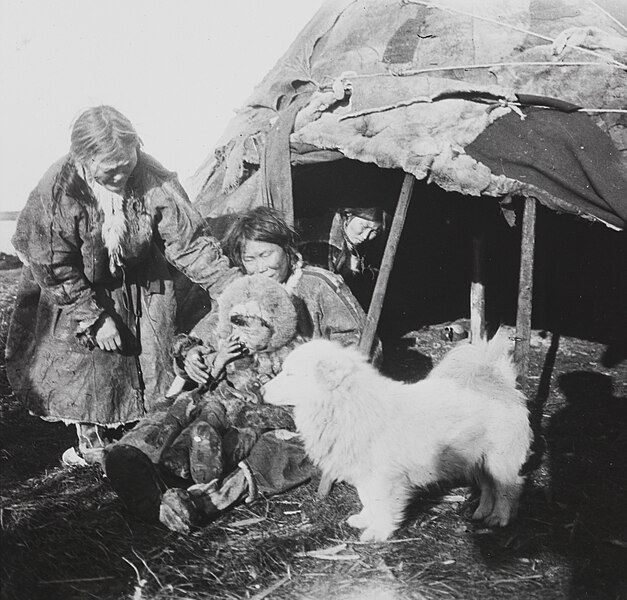
Nenets people, photography by Fridtjof Nansen, October 1913
In many spiritual beliefs across the world, wind carried deep symbolism. In Christianity, the Holy Spirit is frequently represented as a breath or wind. And in ancient shamanism too, wind is more than mere air, as shamans recognized it as the Earth’s breath, a conduit for spirits, and a herald of the changing seasons. The people of many Indigenous cultures mastered the art of paying attention to, comprehending, and harnessing this element. It is about learning to listen to the wind, and to all of nature’s messages, as we are part of nature not separate from it.
A storm, winds howling, lightening and thunders, perhaps soon the rain. It is all just movement needed, a cleansing for freshness to enter us and to feel rejuvenated. You see, a storm isn’t just wind, rain, lightening, and thunder, it is how we understand ourselves and how we live together in our world. The air I breathe, the air that clears life, is also the air you breathe. Air is not just air; the element of air symbolizes knowledge, thoughts, words, perceptions, beliefs. And if the knowledge that we absorb becomes stale, outdated, or polluted by prejudice, bias and complacency, or poisoned by anger, hate and misconceptions, then the knowledge we are breathing, in both inhale and exhale, may be to our detriment collectively. So when the winds comes, welcome them, let them clear what’s been stagnant, let them shift and move away the clouds that no longer serve us.
Let the wind, let the snow, let the sparrow gently on your shoulder
What I love about this tale is that it shows us how each of our steps matters. Sometimes we begin, we try but maybe things don’t work out, that’s okay, we’ll try again. Along the way, we learn to have patience, we learn to walk a kindness of rhythm, we learn from all the little stops and hurdles, doubts, resistances and hesitances – all are purposeful to us and hold wisdoms within them. Eventually, we’ll learn the cycles of the land, and we’ll learn to understand the words the winds, the suns, the moons speak.
Patience, endurance, humbleness, and the perseverance to keep going. It’s becoming life itself, becoming the earth, the water, the wind, the soil, the movement, the whisper of sparrows, the girls knitting fates and destinies – this is all us. Three girls it took, three tries, three phases of life; we try, we fall, but then we rise again.
We are the seasons, the temperatures, the waxing and waning of moons and travelling of constellations across the skies. We are the soil and the water and the hands and the roses. We were all touched by kindness at some point, by grace and tenderness, and its fragrance scented our hands even after we unheld hands from that person; so we then hopefully will touch another’s hands with kindness also, and they then another’s.
We are the voice, the earth, the waters, we are the touch and the tastes, and the whispers of songs of love and soul along the way, showing the cycles of the land unveiling under our steps – and the beauty that unfolds eventually. Because even in winter, something is still shaping and forming beneath the ground, and in its own time, it will reach its hands through the soil for merging, tempted by water, tempted by air – and we’ll see the wild roses.
Nurturing means to tend to what already is. We don’t push seeds into the frozen grounds in winter, flowers will not grow, it is not their time yet; we’ll only hurt them if we force them, and we’ll frustrate ourselves also. When it’s time, it’s time. Spring comes, it’s time for spring. For now, we just nurture what is, we give it our love and attention, for there is so much love already beside us – so much warmth and beauty and sun beside us and in front of us. Keeping our hearts and hands of love will make them even more tender for when we plant the seeds in spring.
There is tenderness and wisdom in this tale – reminding us that each step matters in ways we may not understand yet, so it is important to allow it all to happen and to open our palms in gentleness. There is trust in this tale, and there is togetherness and support, because no we’re not meant to do it all by ourselves. We’ll have a little sparrow to help us, we’ll have three little girls hidden to help us, we’ll have a wise woman to help us in ways we wouldn’t even recognize immediately. Step by step, stay focused on the now, winter or snow or winds, it’s all part of everything. This is a tale of humanness – of our humility to help one another, our courage to show up and our willingness to support.

For more of my writings, browse through my Art of Love.
If you wish to support me, you may do so by sharing my articles and poems, buy my poetry books or donate some magic coins in my hat on Paypal. If you would like to work with me, visit my Offerings.
Your support means so much to me! Thank you wholeheartedly!
The cover photo is of our little wonderfully pink magnolia blossom.

